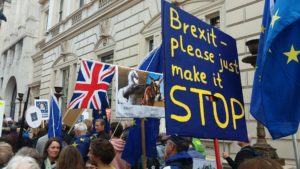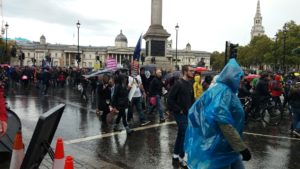Over 30 years, Alan Moore and Dave Gibbon’s Watchmen has been considered one of the great works in comic books. It has achieved huge sales and critical acclaim, and is loved by many readers who ‘don’t read comic books’. This continued success comes despite being disowned by its writer many years ago.
While Watchmen is deeply connected to Alan Moore, the story and characters are owned by DC Comics and, ultimately, the huge Warner Bros corporation. Which means Moore has no control over how it is reused and relicensed.
At present there are two ongoing works produced in response to Watchmen. The first, a comic book called Doomsday Clock, I wrote about here. I think the series is a fiasco, but a critically interesting one. Another recent essay on watchmenwatch.org, McWatchmen: Doomsday Clock took the themes I’d raised much further and is worth a read. It shows how the series aims to resolve editorial issues through story, and includes some harsh digs. As well as considering the issues of “DC editorial politics as a cosmology”, the essay looks specifically at how Doomsday Clock relates to ideas of ownership.
As the jewel in DC’s crown, Watchmen shone too brightly, and its distance from the rest of the company’s intellectual property was an offense. How dare it sit there, untouched for so many years? When all the rest of DC’s IP has been repeatedly dragooned into rebranding efforts, why isn’t Watchmen pulling its weight? If the entire economic base of DC comics weren’t corporate capitalism, I would be tempted to see the assault on Watchmen as a kind of populist levelling
It’s bizarre how many superhero events seem to be about reshuffling corporate properties rather than storytelling. As this essay says, “Rebooting DC becomes part of the DC brand, and the results of the reboot are at least as compelling a source of suspense as simply wondering how the bad guy will be defeated.”
In this case, things are far worse, because Moore has such a difficult relationship with DC. After they cheated him out of royalties on Watchmen merchandise, he refused to work for them again. But the small collection of work he had produced for DC has been reused and repurposed over the years, particularly by Doomsday Clock’s writer, Geoff Johns, who has built entire sagas from Moore’s short stories.
DC’s Watchmen Crisis is made even worse by the intervention of Damon Lindenhof’s new TV adaptation of the book, which is currently running. The comic book series is so late that the entire first season of the TV show will be broadcast between the comic’s penultimate and final issues. These delays in the comic book also seem to have caused disruption in other DC series, which were relying on the rewritten continuity that Doomsday Clock provided.
Lindenhof’s work differs from that of Geoff Johns and Zack Snyder (who made the Watchmen movie) in that he attempts to respond to the spirit of Moore’s work more than the text. The first 2 episodes have been bold and incredible. It begins with a reconfiguring of the Superman origin story against the backdrop of the 1921 Tulsa Race Riots, a truly shocking incident where organised racists destroyed a prosperous black community.
The theme of race in America is a powerful one, and Lindenhof is working with incredibly strong material. A show that justifies the themes and content he has used will be truly great. As far as track record goes, Lost is not reassuring. Here, Abrams and Lindenhof produced a show that became increasingly ambitious in scope and technique, only to reveal the lack of a grand design at the end.
Whether or not the show succeeds in its ambition, it’s been good to see a response to Watchmen that has the same level of ambition as the original. The pilot was one of the most exciting openings to a new show I’ve seen. Unlike with Doomsday Clock, I’m watching because I like it so far, not because I’m fascinated by a disaster.











